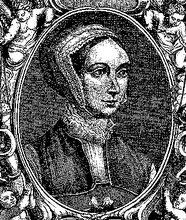One person stands at the centre of all the conspiracies that sought to thwart, depose or kill Mary, Queen of Scots, from the time that she was betrothed to the Dauphin in France; he is William Cecil, the first minister of Elizabeth Tudor, 1520 - 1598.
During its history England has produced some fairly nasty people, but the person of William Cecil is particularly hard to swallow as one of our forebears. It was he who from the outset conived and conspired to force the downfall of the Scottish Queen and whose 'skill' at manouvering the English State to execute her, caused shock and scandal throughout Europe and precipitated the whole episode of the Spanish Armada. Many, throughout Europe, still placed their hopes in Elizabeth Tudor, that she would ultimately show herself to be an honourable and Christian ruler, but the execution of Mary Stuart destoyed those hopes.
William Cecil masterminded the reconstruction of the English State, together with a whole mindset, as an alternative to truth. He manipulated truth and freedom in such a way that his alternative approach to reality controlled government, public information and individual conscience. The penalty for standing against him was death, imprisonment and loss of all possessions and rights, for men, women and even for young children. It is hard not to think of Hitler and Stalin when you think of Cecil!
Cecil was the architect of a State that was, in its day, an early and extremely agressive form of the Enlightenment, pushing God and truth to the margins and establishing human endeavour as the pivot. It is not surpising that England, with him at the helm manipulating God's plan and laws according to his design, became separated from the great movement of the Church in the world. In such a context, many, including Mary Stuart were merely pawns.
However, since her death Mary Stuart has been shown much honour by each successive generation; it is as though we instinctively recognise her dignity as well her naivity. And much more, we honour and celebrate all those beatified and canonised martyrs, who are such a witness for us today and who help us to see the real vision of life and the call to be part in it: God's Kingdom.





































